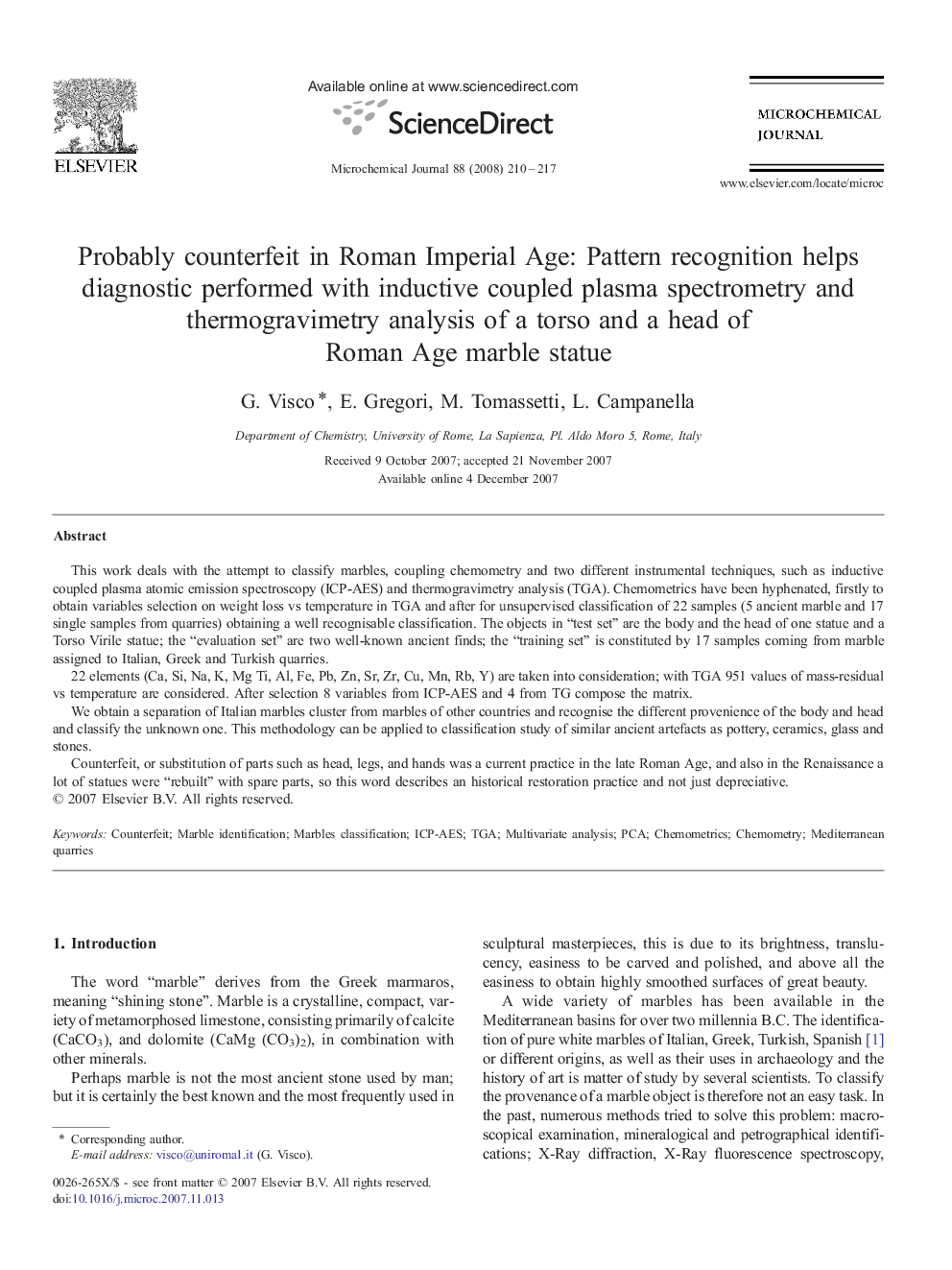| Article ID | Journal | Published Year | Pages | File Type |
|---|---|---|---|---|
| 1228289 | Microchemical Journal | 2008 | 8 Pages |
This work deals with the attempt to classify marbles, coupling chemometry and two different instrumental techniques, such as inductive coupled plasma atomic emission spectroscopy (ICP-AES) and thermogravimetry analysis (TGA). Chemometrics have been hyphenated, firstly to obtain variables selection on weight loss vs temperature in TGA and after for unsupervised classification of 22 samples (5 ancient marble and 17 single samples from quarries) obtaining a well recognisable classification. The objects in “test set” are the body and the head of one statue and a Torso Virile statue; the “evaluation set” are two well-known ancient finds; the “training set” is constituted by 17 samples coming from marble assigned to Italian, Greek and Turkish quarries.22 elements (Ca, Si, Na, K, Mg Ti, Al, Fe, Pb, Zn, Sr, Zr, Cu, Mn, Rb, Y) are taken into consideration; with TGA 951 values of mass-residual vs temperature are considered. After selection 8 variables from ICP-AES and 4 from TG compose the matrix.We obtain a separation of Italian marbles cluster from marbles of other countries and recognise the different provenience of the body and head and classify the unknown one. This methodology can be applied to classification study of similar ancient artefacts as pottery, ceramics, glass and stones.Counterfeit, or substitution of parts such as head, legs, and hands was a current practice in the late Roman Age, and also in the Renaissance a lot of statues were “rebuilt” with spare parts, so this word describes an historical restoration practice and not just depreciative.
